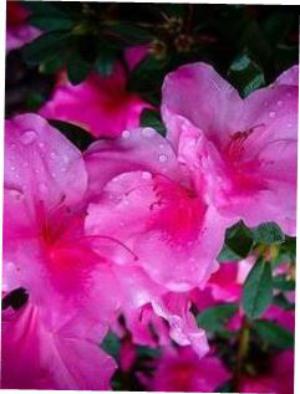Pontic rhododendron
(Rhododendron ponticum ponticum)

Description
“Pet poisonous” – Toxic parts: entire plant Rhododendron ponticum ponticum is a subspecies of the Rhododendron ponticum plant species. This plant species belongs to the family Ericaceae, commonly known as the heath family. Rhododendron ponticum ponticum is an evergreen shrub that is native to southwestern Asia and southern Europe, including Turkey, Greece, and the Caucasus. This subspecies has been widely introduced to other parts of the world, including North America, Australia, and New Zealand. Description: Rhododendron ponticum ponticum is a large evergreen shrub that can grow up to 5 meters tall and 4 meters wide. It has large, leathery, dark green leaves that are 6-12 cm long and 2-4 cm wide. The leaves are oblong-elliptic in shape and have a pointed tip. The underside of the leaves is covered with tiny, brownish scales. The flowers of Rhododendron ponticum ponticum are purple or lilac in color and appear in clusters in late spring to early summer. The flowers are funnel-shaped and have 5 lobes. They are 5-7.5 cm in diameter and are borne in clusters of 10-15 flowers. The flowers are highly fragrant and attract bees and other pollinators. Habitat and Distribution: Rhododendron ponticum ponticum is native to southwestern Asia and southern Europe, including Turkey, Greece, and the Caucasus. It is found in a variety of habitats, including forests, rocky slopes, and river banks. This subspecies has been widely introduced to other parts of the world, including North America, Australia, and New Zealand, where it has become invasive in some areas. Cultivation and Uses: Rhododendron ponticum ponticum is a popular ornamental plant in gardens and parks, and many cultivars have been developed. It prefers acidic soil and partial shade, but can also grow in full sun. It is tolerant of cold temperatures and can withstand frost and snow. The plant has a toxic effect on many animals, including humans, and all parts of the plant contain toxic substances. The honey produced from the flowers of Rhododendron ponticum ponticum is also toxic and can cause illness or death if consumed in large quantities. In addition to its ornamental use, Rhododendron ponticum ponticum has been used in traditional medicine for its astringent, antiseptic, and anti-inflammatory properties. However, its toxic properties make it a dangerous plant to use medicinally without proper knowledge and expertise. Invasive Species: Rhododendron ponticum ponticum has become invasive in some areas where it has been introduced. It is able to outcompete native plant species and can alter the natural ecosystem. It has been declared a noxious weed in some countries, including the United Kingdom, where it is considered a major threat to native plant species. Control of invasive Rhododendron ponticum ponticum can be difficult due to its ability to regenerate from small pieces of stem and root. Control methods include cutting, pulling, and chemical treatments, but must be carefully planned to avoid damage to the surrounding environment. Conclusion: Rhododendron ponticum ponticum is a beautiful and fragrant evergreen shrub that is popular in gardens and parks. However, its toxic properties make it a dangerous plant to use medicinally without proper knowledge and expertise. In addition, it has become invasive in some areas where it has been introduced, and can cause harm to native plant species and alter the natural ecosystem. Careful control measures must be taken to prevent the spread of this invasive plant.
Taxonomic tree:







